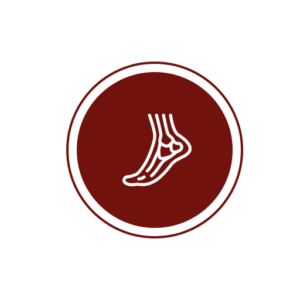FAQ
If I see an orthopaedic surgeon, will he or she recommend surgery generally?

What are the benefits of minimally invasive bunion surgery?
Minimally invasive bunion surgery is essentially a skillset your surgeon possesses to perform an operation for bunions using small incisions instead of the traditional approach with a standard incision. These new techniques offer better early postoperative pain control, lesser chances of wound infection, less joint stiffness and as such early mobility and faster rehabilitation. The procedures are day surgery procedures and patients can be discharged the same day with advice on follow-up and dressing changes.
What is arthroscopic surgery?
Arthroscopic surgery which is also known as keyhole surgery is the use of small incisions over a joint to perform selective surgical procedures in the joint with the aid of a camera (arthroscope) within the joint with other small instruments. Many therapies can be conducted using this method and in several joints including the wrist, elbow, shoulder, knee, hip and ankle joints. Generally these procedures are considered minimally invasive and patients benefit postoperatively with less joint stiffness and faster rehabilitation as compared to open joint procedures. Only certain joint conditions are suitable for arthroscopic surgery though and your surgeon will advise you on this.
How do I know if I have flat feet?
There is usually a gap beneath the inner part of the foot when a person stands, as the arch raises off the ground slightly. In people with flat feet or a very low arch, this gap is diminished or sometimes not present. Other tell-tale signs of flat feet will be noticing the wearing out of the soles of the shoe on the inside aspect. Also footprints in the sand or when out of the shower, may show the presence of an imprint on the inside of the foot. ( In patients with a normal arch, this imprint is not present) Most patients with flat feet do not have symptoms but other conditions can develop together with flat feet such as tight calf muscles and also tendon degeneration on the inside of the foot generally known posterior tibial tendinopathy. It is always wise to have flat feet assessed and to prevent it from getting worse and the development of symptoms.
What is the difference between a sprain vs a fracture?
A sprain is an injury that damages a ligament while a fracture on the other hand is when the bone has broken. Your orthopaedic surgeon will conduct tests such as x-rays and or MRI or CT scans to determine for certain how badly the ligament is injured or to study a fracture more closely. Sprains generally heal with time and rest and a good rehabilitation program, but a fracture will require some type of treatment including splint, cast, crutches, and even surgery.
When should I see an orthopaedic surgeon for my foot and ankle problems?
If you have any foot and ankle injury and pain, it’s important to have them examined to find out the diagnosis of the condition(s) causing pain. Sometimes these issues tend to get worse if left alone without proper treatment. While some conditions can be corrected by foot and ankle strengthening exercises, stretching exercises or changing the kind of shoes that you wear, other issues can be more complex, requiring special knowledge and training to properly treat them.
What are the various diagnostic tests?
In addition to physical examination by your orthopaedic surgeon, most orthopaedic injuries or conditions require the use of imaging and radiology tests like x-rays, bone scans, computerized tomography (CT), magnetic resonance imaging (MRI) or ultrasound. All these tests are not invasive or painful.
When is the right time for me to have surgery?
There is no one-size-fits-all answer for deciding when to have surgery. Key considerations include whether you are in pain, you are experiencing instability or decreased mobility, and whether the injury or condition is affecting your overall quality of life.
Am I too old for surgery?
Age is hardly a problem for surgery as long as you are in reasonable health and have the desire to continue to live an active and mobile life. You will undergo rigorous tests to ensure that you are suitable for surgery.
How long does it take to recover after surgery?
Foot and ankle surgery is a specialised area of surgery where every patient is different with unique needs and goals. Before the surgery, your orthopaedic surgeon will discuss with you in detail to ascertain the best course of treatment. After the surgery, you will need to follow your doctor’s instructions, perform appropriate exercises and modify your activities to ensure a smooth and quick recovery.
Will I be able to do everything I used to do after surgery?
The goal of surgery is to restore function and get you back to full mobility without pain. However depending on the type of surgery, there is usually downtime and some limitations. You should have a candid discussion with your orthopaedic surgeon regarding realistic expectations after surgery.
Does your clinic accept insurance?
Our clinics accept all patients, with or without insurance plans. In addition, we are on the specialist panels of several insurance providers. If your insurance provider is not listed here, we can still attend to you as you may be eligible for coverage. Please feel free to contact us and our team will be happy to assist you in the process of checking with your insurance provider.

Swiss & Singapore Trained

Transparent Charges

Experienced




